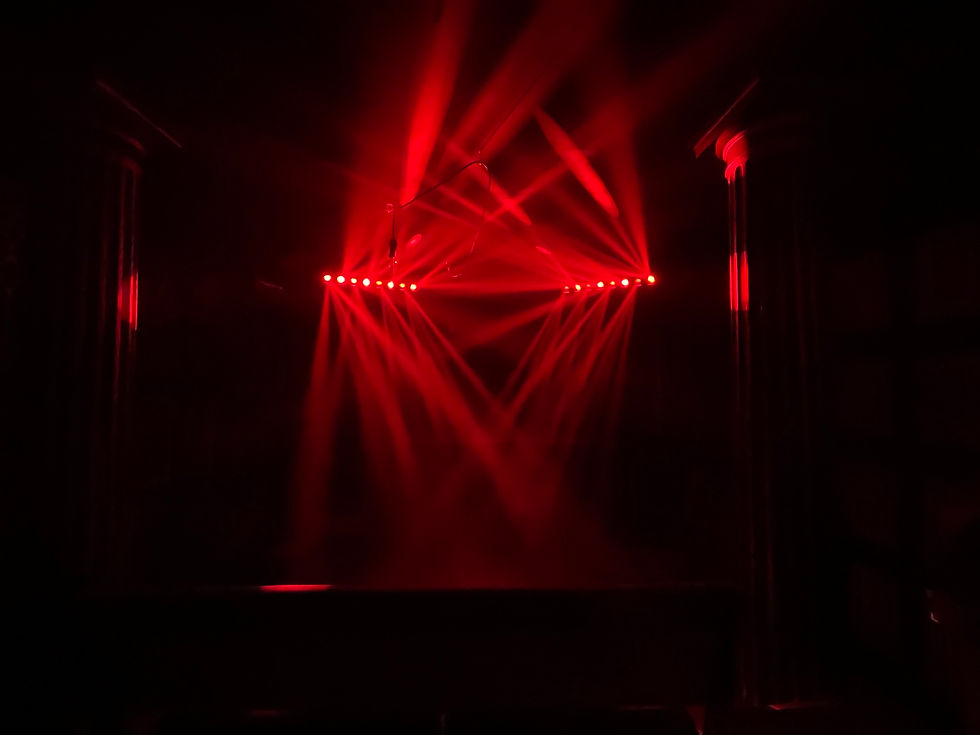IMMERSIVE DESIGN THEORY - "PERMISSION VS INSTRUCTION".
- dgoodman5
- Jun 10
- 3 min read
Updated: Jun 25
How to Guide Without Leading, and Lead Without Guiding
When building immersive experiences, you’re not just designing environments, you’re designing behavior. You're not just asking guests to look at something. You're asking them to do something.
But here's the catch: How do you get them to do what you want, without telling them to?
Enter the theory of Permission vs Instruction. A foundational design principle for immersive creators who want to shape guest behavior with intention, elegance, and emotional payoff.

The Two Fundamentals of Interactivity
At the core of any interactive experience lie two invisible hands that steer guest engagement:
Instruction – Clear, directed action: “Do this.”
Permission – Implied, open possibility: “You can do this… if you want.”
Understanding the distinction between these models is critical, not just for flow and pacing, but for agency, immersion, and guest satisfaction.
Let’s Talk About Instruction
Instruction is clarity. It’s explicit. Controlled. Immediate. But it doesn’t always need to be delivered like a teacher at the front of a classroom.
🔹 Literal Instruction
This is the most recognizable form—spoken or written commands from an actor or sign:
“Put the fuse in the box.”
Sure, it’s clear—but too much of this can feel infantilizing or overly mechanical. The trick is not in what is said, but how it’s delivered. The same line, delivered with dramatic urgency or quiet menace, becomes more than an instruction—it becomes theatre.
“Put the fuse in the box… now.”Suddenly the line carries tension, consequence, and drama. It becomes a moment.
🔹 Signposting as Instruction
Signposting allows instruction to become invisible. It's in-world guidance—props, graphics, lighting cues—that suggest action without demanding it.
Example:
A fuse box is labeled with a scrawled note:“Maintenance log: Fuses keep blowing. If I don’t get this fixed, someone’s going to get hurt.”
Now the box has context. It belongs. There's history, stakes, and implied action—all without a character uttering a word.
Even more minimal? A charred fuse slot with a sparking wire and an “⚡” hazard symbol. No text. No voice. Just design and consequence.
Instruction doesn’t need to shout. Sometimes, it only needs to exist.
Now Let’s Talk About Permission
Permission is suggestion. It’s subtle. It’s spacious. It invites curiosity.Where instruction points and says “go,” permission stands back and says, “you could…”
It’s about making a guest feel like their action is their idea, even though it’s carefully curated.
🔹 Permission Through Focus
In game design, it’s common: A hallway of closed doors, except one—bathed in light. No sign says “go here,” but that door calls.
In immersive experiences, the same applies. A lone character standing, waiting, glancing. A quiet item placed with intention on an otherwise empty table. A curtain rustling just slightly in a still room. You haven’t told them what to do. You've just shown them what can be done.That’s permission.
🔹 Permission Without Chaos
A common misconception is that giving permission means total freedom. But permission without focus becomes paralysis. Too many open-ended choices overwhelm rather than inspire.
The magic lies in calculated focal points. A guest thinks they’re exploring freely, but in reality, they’re moving through carefully planted cues and weighted objects, subtly guided by your design hand.
The Dance Between the Two
Permission and instruction aren’t mutually exclusive—they’re partners in pacing.
Instruction drives urgency, action, and momentum.
Permission invites discovery, emotion, and ownership.
Used in combination, they create ebb and flow: Intense moments of directed storytelling, followed by wide-open opportunities for exploration.
Want a scene to move fast? Use clear instruction. Want a guest to slow down and reflect? Give permission to pause, to notice, to choose.
Ask Yourself:
Does this moment need action or attention?
Should the guest feel guided or free?
Is this task best delivered with clarity or curiosity?
Designing for interaction is about choosing the right tool for the right beat. Not every moment needs instruction. Not every moment needs freedom. The best experiences breathe between both.
In Conclusion: Design the Feeling of Discovery
The guest should feel like they’re discovering, even when they’re following a path you laid.
That’s the true power of permission. And when they must act, give them instructions that feel like moments. Not chores.
Your guests won’t remember the sign on the wall. They’ll remember the moment they chose to follow it.
DESIGNING IMMERSIVE.
It's complicated, intricate and specialist. Koncept has it mastered.
Koncept are specialists in writing and designing immersive attractions that stand out. With a portfolio of award-winning productions, Koncept has a proven track record of transforming ideas into fully realized, expertly written experiences that customers will pay to be immersed in.
_edited_p.png)




Comments